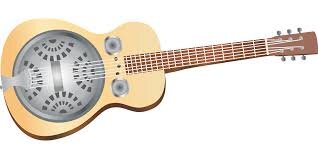Grave Markers
/These days, folks plan ahead for the time when they will pass from this world. Well, I guess that’s not a new thing, the wealthy in ancient Egypt planned for years – long enough to have giant tombs built. And, the Bible tells us that Joseph left instructions for his bones to be carried into the promised land.
I’ve been helping my aunt choose and buy a tombstone – a project my young children don’t quite understand, Ruthie declared, “But she’s not dead.”
I suppose it’s both natural and understandable to think about the next steps as we see ourselves coming to the end of life. While the ‘commandment concerning [your] bones’ (as Hebrews 11:22 puts it) is a minor issue eternally, it is nice for families left behind not to have to deal with final details. And those final details comprise a $16 billion industry in America.
That wasn’t always the case. For many, many years, death snuck up on our people. From accidents to unseen natural causes like strokes and heart attacks, loved ones often passed without warning and bodies had to be interred unexpectedly. A Christian burial demands respect of the body that previously housed the Holy Spirit, and no one would want to put away their family member without a marker. Yet the granite monuments we buy today and the skill to permanently mark them weren’t always available. And that leaves the mountain peppered with blank gravestones and people like me with endless questions.
I think I’ve mentioned before that I’m on a quest to locate the site of my Great-great-great Grandmother’s grave. She died of Tuberculosis – that mysterious plague of the 1700’s and 1800’s. The source was unknown for decades and even dead bodies had to be treated as contagious. So when she passed, she would have been very quickly laid to rest.
Moreover, as we’ve paved roads on new paths and small settlements were reclaimed by woodlands, many old graveyards were just forgotten. I suppose as children moved away or passed on themselves, those unmarked graves were no longer visited, maintained or decorated. It doesn’t take long for their very existence to become a mystery. And if you’ve ever happened upon one of these fields of stone, you’ve seen their upright slabs competing with saplings to dominate the land.
Every time I see nameless graves, I’m reminded that there lies someone’s father or mother son or daughter. As I’ve researched where this grandmother may be buried I’ve often remembered another Great-great Grandmother who had lost infants who were buried in either unmarked graves or marked only with a plain stone and she would often say, “Only God knows where my babies are.”
Well I hope to do better by this aging aunt so that we will long know where she lies when finally she needs the grave. And I will continue to search for these lost graves so that generations after me may better or more easily remember their ancestors.












